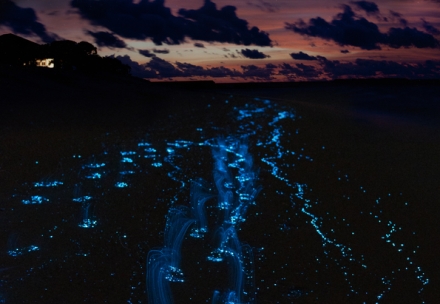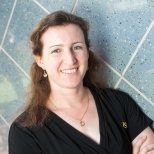Spotlight on: Photobiology

The Biologist Vol 60(4) p32-33
Photobiology studies the interaction of light with living organisms and biological systems. Photobiological responses are the result of chemical and or physical changes induced in biological systems by any non-ionising radiation.
Why is it important?
Most life on earth is sustained by the harnessing of the Sun's energy by photosynthetic organisms. Photobiologists not only study the way organisms react to light, but use light to find out more about the properties of living tissue or biological molecules.
Light can be used in various therapies and treatments for disease and is used widely in the sterilisation and imaging industries. Certain fascinating organisms produce light themselves (bioluminescence) and scientists increasingly use their luminous pigments as a tool in biological research. It is thought engineered bioluminescence could one day replace conventional electric lighting.
What areas can photobiologists work in?
The study of how living tissue interacts with light is important to a huge range of research areas and industries. Much research is focused on the causes and treatment of skin cancers and other dermatological disease, for example, while climate change studies depend on research into how plants and aquatic ecosystems use and reflect the Sun's energy. Photosensory biology is another large research field, covering everything from vision to circadian rhythms and phototropism (growth towards or away from light).
In terms of using light, bioluminescence imaging involves splicing segments of DNA that codes for luminous proteins into cells or organisms to study biological processes non-invasively. It is now used widely in genetics and clinical research. In industry spectroscopy, sterilisation and sampling products are all reliant on scientists with an understanding of light.
How do I pursue a career in photobiology?
Educational routes depend on the particular aspect of photobiology that is of interest. For example, someone working in an environmental setting or photosynthesis research may have studied biology or biochemistry before going on to specialise in plant photobiology. Someone working in laser therapy, however, may have studied medicine or physiology and then conducted research in the dermatology unit of a hospital.
The field is so diverse that there are very few undergraduate courses in the subject. The european Society for Photobiology offers a short annual course covering the main aspects of the field (photomedicine, photosynthesis, photosensory biology, fluorescence diagnosis) for MSc or PhD students and occasionally universities offer PhD level courses (such as the University of Oslo).
For more information
The European Society for Photobiology and The American Society for Photobiology offer education, training, events and papers of interest for members.
www.esp-photobiology.it
www.photobiology.org
www.photobiosci.info
 At a glance
At a glance
Name: Joanna Turner
Profession: Associate lecturer at the University of Southern Queensland; council member of the American Society of Photobiology.
Qualifications: PhD, physics – University of Southern Queensland.
Interests: Ultraviolet radiation measurement; ultraviolet radiation reflection from man made structures; science education research.
What does your research involve?
My research involves monitoring UV radiation – specifically the reflective properties of man-made structures. It's important to help understand the impact it has on people – Australia has such high UV levels as it is, and the highest rate of skin cancer in the world. People working in the construction industry are especially exposed and often working alongside highly reflective structures.
My preliminary studies suggest if your face is facing, say, galvanised metal, UV levels may increase by up to 50%. Even painted and less reflective surfaces have an impact over time. I'm trying to develop ratings for different material types.
What does an average day involve? Presumably you spend a lot of time outdoors.
Yes, when I'm doing research much of it is outside. When I go in to talk to schools I tell them that my uniform isn't a lab coat and goggles, it's a hat, sunglasses and sunscreen! But we also have machinery at the university that generates UV light, so we work in the lab, too.
Do photobiologists tend to work in hot sunny areas?
I'm not sure about that – the birthplace of the field was in England I think. There are people from all round the world working here but also lots of people from South America, which has similar problems with ozone depletion to Australia.
What other areas of biology could benefit from your research?
I'd love to find out more about the reflective properties of butterflies, and bees are sensitive to UV light – flowers reflect UV light to attract them – so it would be interesting to use research on UV reflection and how it affects their vision.
How did you get into photobiology?
I think of myself primarily as a photophysicist who is interested in how photons affect biological systems. I mostly use chemical sensors so I've done some chemistry too, and quite an array of people join us here – lots of them from the biology side.
I did physics at university and did postgraduate research for a UV expert, so that's how I got into that side of things.
What else interests you in the field?
I would love to get into the technology side of detecting UV. Reflective UV photography can give us a lot of information about UV light. I am also involved with getting young people interested in photobiology and science in general.
Children need more opportunities to be excited by science at school, because the younger generation are the future of science. I currently do a fun experiment with paper that changes colour under UV radiation, which children of any age can do.


